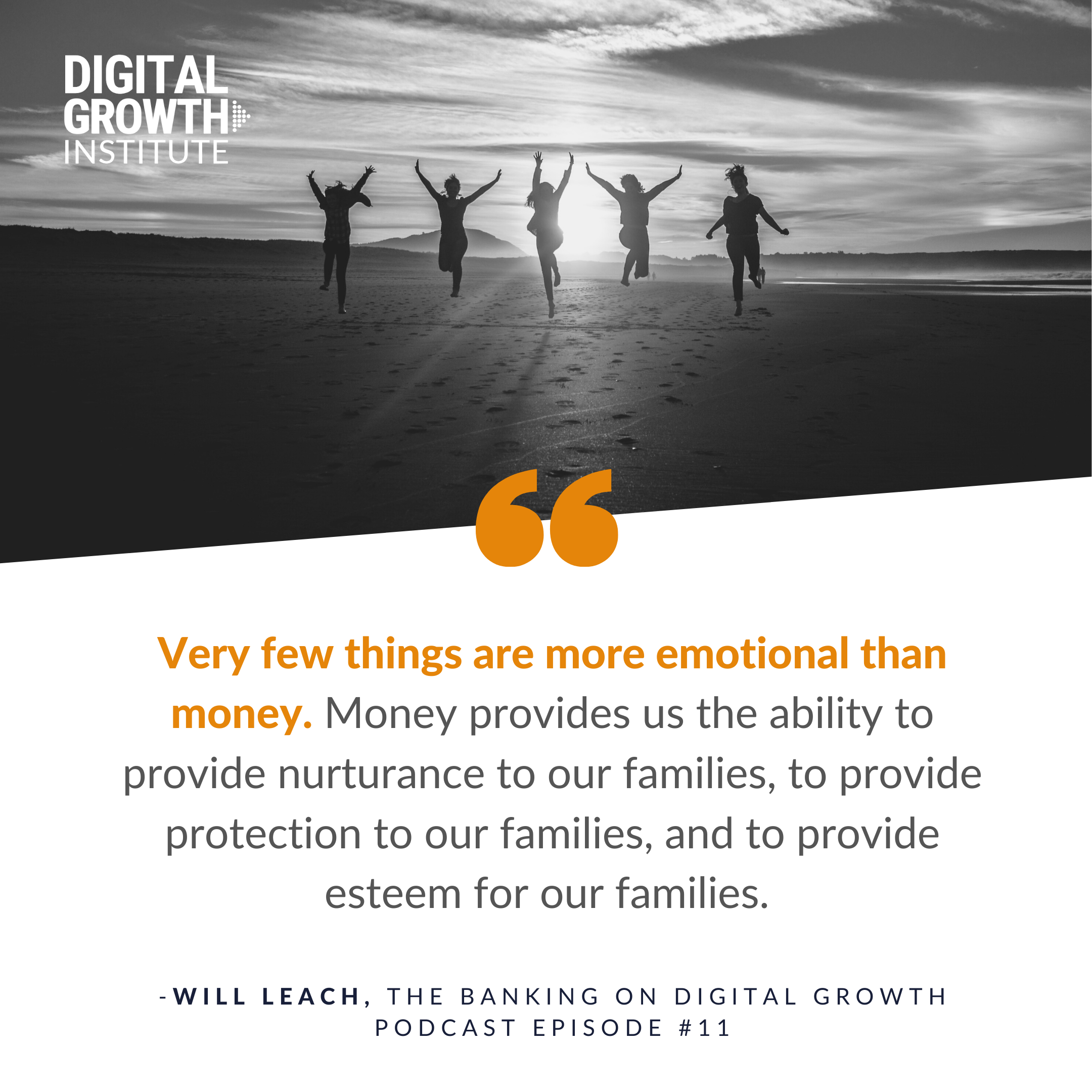The most valuable thing a marketer can do is get into the hearts and minds of their consumers.
This is more than using “emotional appeal” as your ad strategy. We’ve seen videos and print ads designed to evoke happiness, sadness, fear, etc. The no-smoking ads and the adopt-a-pet campaigns are certainly compelling. But as powerful as they are, they are designed for the masses. They are not exactly targeted to a specific audience or niche market.
So let’s rephrase that first statement.
The most valuable thing a marketer can do is get into the hearts and minds of their well-defined consumer personas.
After decades of studying human behavior and the psychology of messaging, Will Leach, bestselling author of Marketing to Mindstates and founder/CEO of Trigger Point, a behavioral research and design consultancy, has discovered that we are influenced by context: We all have attitudes. We all have beliefs. We all have preferences.
During this time of chaos and crisis, mindstates are exactly what every financial brand marketing, sales, and leadership teams should be thinking about right now.
“A mindstate,“ Will explains, “are these moments when context, like the current context we're all in right now from a global perspective, where context influences our attitudes, our beliefs, our values.”
Simplified, Will describes mindstates as temporary moments of emotional awakenings. Given the new post-COVID-19 environment we are in, these mindstates can last several months.
Discover The “Holy Grail” of Marketing
“When you have emotional arousal, you're much more susceptible to emotional decision making. And so it's kind of like the Holy Grail if you're in marketing of understanding why emotional marketing works, it's because you're tapping into a psychological mind state. If you know the mind state, you know a much better way of engaging with consumers,” Will describes.
This perspective is closely aligned with what we teach here at the Digital Growth Institute.
People want three things in life:
1. Health
2. Wealth
3. Happiness
The challenge for many financial brand marketing, sales, and leadership teams is that they're driven by logical thinking, rather than emotional thinking.
Logical thinking is important, no doubt, when you're handling people's money.
But there is a gap.
And that gap creates tension, particularly with the way that financial brands go to market and communicate emotion. That misalignment is what leads to a lack of trust on the consumer’s part as people don’t feel financial brands truly want to help them achieve health, wealth, and happiness.
There is nothing more emotional in this world than money, as Will points out, and you need to elevate your thinking above and beyond just the rational desires that people have to earn more money.
Diving into the Minds of Consumers
Helping people make better financial choices can only be done if we understand people’s financial goals. But not the cliche, “I want to save money” goals. We are talking about unveiling the purpose, the emotional reason, behind saving money or making money.
The purpose is powerful.
Because of the environmental changes we are seeing due to the pandemic, Will has identified the three overall goals that everybody has. Regardless of their situation.
1. Safety: physical or financial
2. Release: relaxing and escaping
3. Control: of your situation
What is the roadblock to these goals?
Fear.
Whether it’s real or perceived.
And when people are fearful, they don't always make the best choices or decisions.
Now that we have identified the three main goals we all desire to achieve, let’s look at what Will has defined as the two ways we attempt to reach those goals.
1. Promotion
The consumer is looking to maximize gains. They are looking to find someone they can trust that will help increase the chances of successfully reaching their goal.
2. Prevention
The consumer believes the best way to reach their goal is to limit risk. They're going to look for companies with strategies of, “if you go down this path, you are less likely to lose money.”
Because there is so much financial uncertainty post-COVID-19, there is a solid movement for prevention. People are looking for security. They want to maintain the status quo. They want to limit risk and remain “safe.”
“Losing Less” or “Saving More”
Our research at the Digital Growth Institute has shown that people are more likely to take action to avoid a loss than they might be to achieve a gain.
This points right into the idea of Will’s Marketing to Mindstates, the psychology behind consumer messaging.
At DGI, we’ve experimented with AB testing, transitioning from “take the quick savings quiz” to “see how much we might be able to help you save,” to “see how much money we might be able to help you stop losing.”
When we went to the negative connotation, we actually saw more conversions.
Will conducted a similar experiment but with coupons.
“Save a dollar” vs.”get a dollar off.”
This small change to the latter communication --get a dollar off-- resulted in a 2X lift in coupon redemptions.
This is where the challenge to “stop doing” lies. So many marketing and leadership teams are so busy “doing.” They are stuck in the trenches. They are not taking the time to stop, pause, think, and reevaluate their digital marketing and sales communication strategies. And until they do so, it’s going to be very hard to make those small, incremental changes that can have exponential results.
Shifting from External Account Holders to Internal Teams
We cannot forget that there is a lot of uncertainty and ambiguity going on internally with those we work with at our financial brand. While our primary focus as marketing and sales teams is on the consumers and providing them with help and hope, our internal team members are also facing many of the same fears and unknowns.
Let’s revisit the three overall goals everyone has and how we can apply them practically inside our organization.
1. SafetyAm I physically safe? Are they sanitizing enough? Am I financially safe? If I’m laid off, is there a severance package? Leadership teams can calm the nerves and reduce the anxiety at an internal level by keeping communication open and transparent.
2. ControlProviding a consistent schedule, like weekly meetings and deadlines, as well as offering choices or multiple paths on the internal level gives employees a sense of control.
3. ReleaseVirtual happy hours can encourage a culture of community and unity on the organizational level.
Bringing the positive energy into their homes can translate to levity in the office or office setting.
Looking Forward: What Action Can My Financial Brand Take Right Now?
Begin to apply this thinking as you identify ways for you to focus on providing your consumers and your internal team as much safety, control, and release as you can.
This is a unique circumstance we find ourselves in. We are able to empathize with our consumers because we are all in the same environmental situation.
We have to figure out ways that we can bring people together for a common purpose, a common enjoyment, or a common pleasure.
This article was originally published on August 26, 2020. All content © 2024 by Digital Growth Institute and may not be reproduced by any means without permission.






